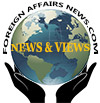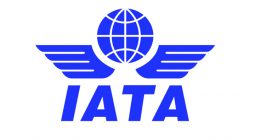The international community pledged more than US $1 billion in emergency funding as Afghans already unsure of where their next meal will come from risk running out of food just as winter sets in.
On Monday, UN Secretary-General António Guterres hailed significant international financial support pledged to the people of Afghanistan following a meeting in Geneva, which nearly doubled the initial US $606 million flash appeal for the country.
“Today, we have already heard clearly more than US $1 billion in pledges…It represents a quantum leap in relation to the financial commitment of the international community towards the Afghan people,” said Guterres.
UN relief chief Martin Griffiths confirmed in his closing remarks to the meeting that more than $1.2 billion in humanitarian and development aid in total had been promised, incorporating both Monday’s appeal, and the regional response.
“The funding will throw a lifeline to Afghans who lack those services; to the small children that Henrietta Fore of UNICEF spoke of, who face the risk of acute malnutrition; to the many women and girls who could lose their access to reproductive health services, and much more,” said the Emergency Relief Coordinator, and head of the UN humanitarian affairs office.
The UN chief reiterated the importance of ensuring that assistance did not come at the expense of hard-won gains for women and minorities in Afghanistan over the last 20 years.
Pressed on the nature of the written assurances that the Taliban delivered in a letter to the UN this past weekend concerning aid assistance, the Secretary-General explained that there were in fact two documents.
He added that it was also important to underline that the Taliban communiqué also appealed for international support for development, to combat the drug trade and security.
Meanwhile, the first UN Humanitarian Air Service flight into Afghanistan’s capital, Kabul, since the Taliban takeover a month ago, has been labelled a “milestone”, with more to follow.
UNHAS is managed by the World Food Programme, which reported that the flight took off from Islamabad, Pakistan, on Sunday and was a success.
The planes will fly to Kabul, then on to the cities of Kandahar, Mazar-i-Sharif and Herat, returning to Islamabad via the capital.
Meanwhile, the US is providing nearly US $64 million in new humanitarian assistance to the people affected by the ongoing humanitarian crisis in Afghanistan. This brings total U.S. humanitarian aid in Afghanistan and for Afghan refugees in the region to nearlyUS $4 billion since 2002.
This assistance will allow to provide lifesaving protection, shelter, livelihoods support, essential health care, emergency food aid, water, sanitation, and hygiene services to respond to the needs generated by recent conflict and compounded by the severe drought and other natural disasters, and the ongoing COVID-19 pandemic.
The United States is the largest single humanitarian donor to Afghanistan, and with this announcement, will have provided nearly US $330 million this fiscal year alone. The United States has prioritized support for Afghan refugees, refugee returnees, and other displaced persons for years, and our enduring commitment is clear.
In another report, a Qatari airplane carrying around 23 metric tonnes of life-saving medicines and supplies from WHO landed in Kabul Monday.
The shipment, which is among the first humanitarian aid to arrive at Kabul airport since operations were disrupted on 15 August, was flown by a Qatar Airways flight donated by the Government of the State of Qatar.
A second flight donated by the State of Qatar is expected to arrive later this week, carrying more WHO medical supplies.
Together, the 2 shipments which contain essential medicines such as insulin, medical consumables, trauma and surgery kits, and COVID-19 testing kits, will address the urgent health needs of 1.45 million people.









